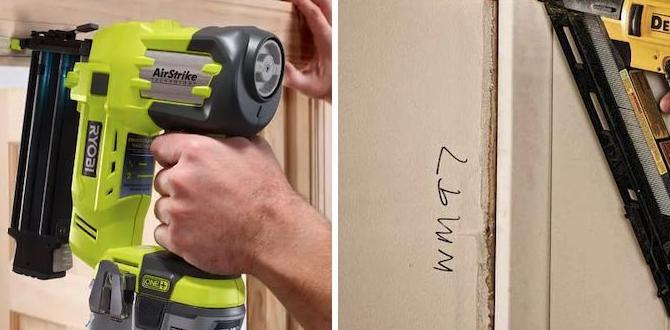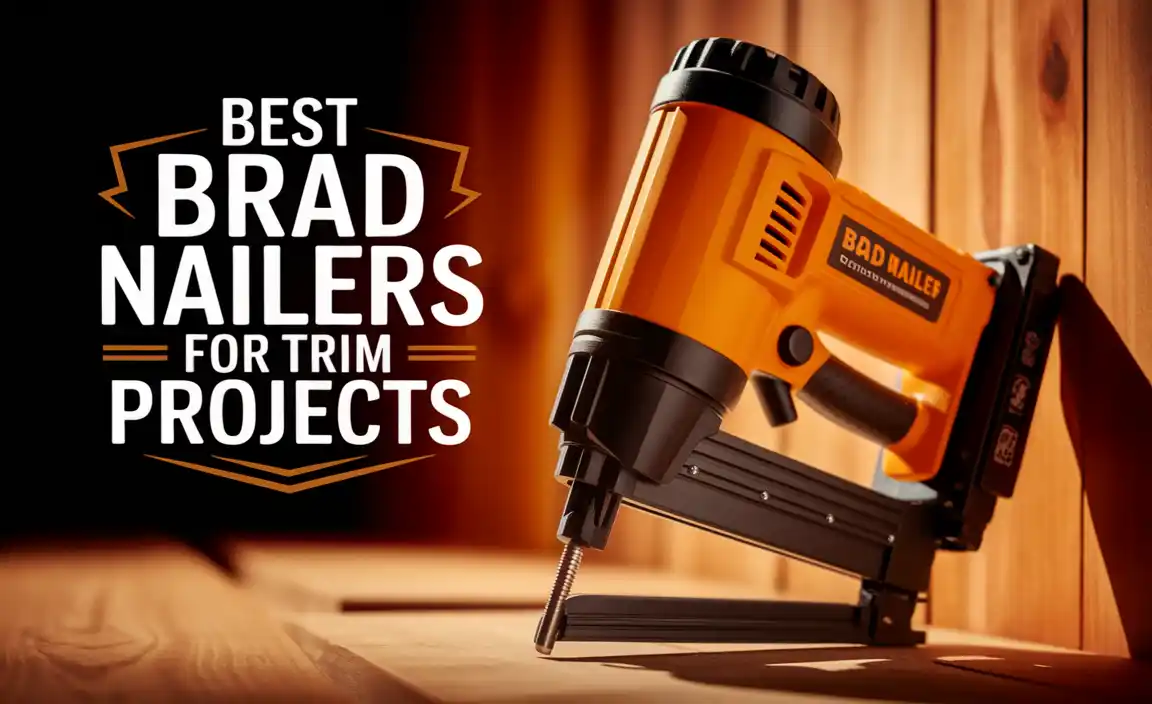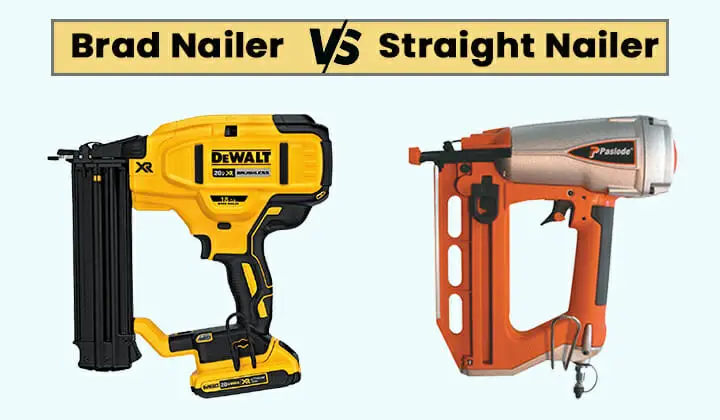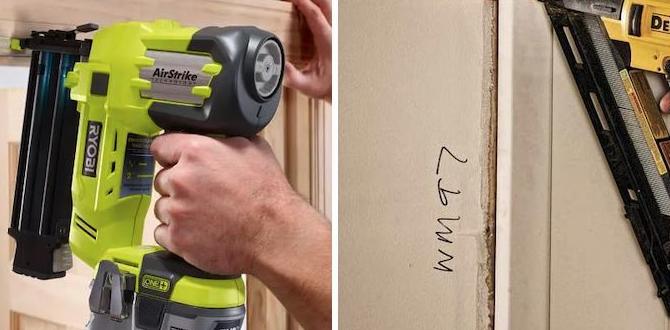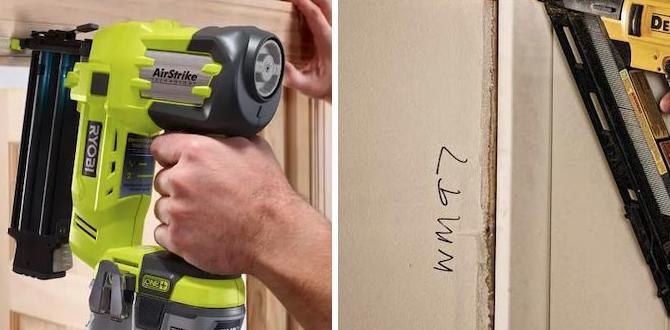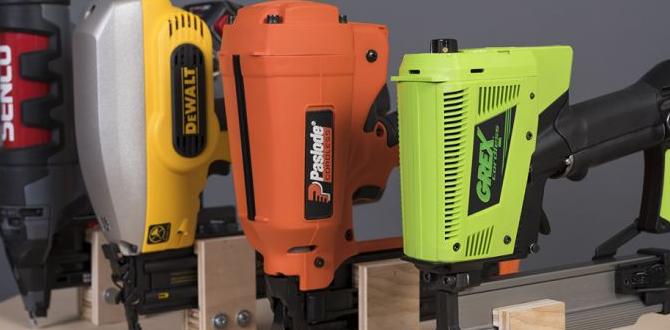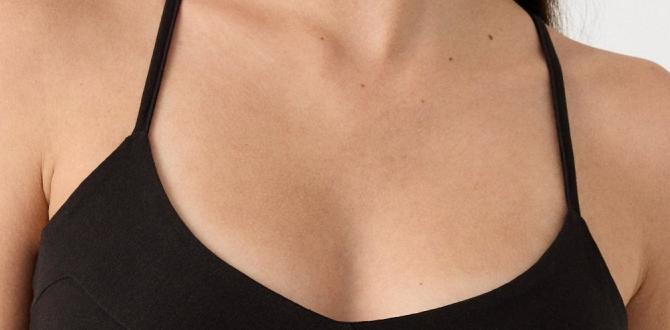A pin nailer is designed for the 21 and 23-gauge micro headless pins and used for delicate works. On the other hand, a finish nailer is designed for the enormous trim nails of 15 and 16 gauge and used for jobs that require more strength. In this article on pin nailers vs finish nailers, we’ll examine each and every aspect of them. Let’s dive in!
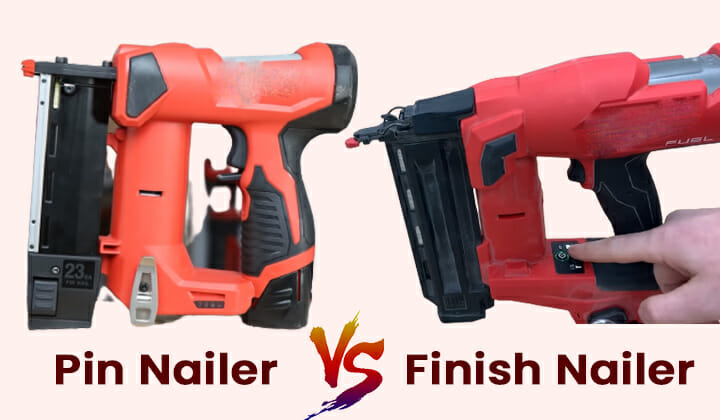
Table of Contents
Pin Nailer vs. Finish Nailer: Differences You Need to Know
To understand the differences between these two types of nailers, you need to know about the nails these nailers use. The main properties and differences between those nails we need to know are the nail sizes, cavity sizes, holding power, versatility, and usage. We are going to discuss these aspects below.
Nail Size
A pin nailer usually uses pins of 23 gauge. Sometimes 21 gauge pins are also used with a pin nailer. The 23 gauge pin is the smallest pin size, but the lengths can be up to 2 inches.
But a finishing nailer uses giant size nails of 15 gauge and 16 gauge diameter, and the length it can drive is up to 2.5 inches.
Cavity Size
Simply, the bigger the nail, the bigger size holes it will create. A large hole leaves marks and needs more putty to fill up gaps. In this case, a pin nailer comes with more significant help. The 23 gauge pins are so tiny, and the holes they create are so small and hard to see. They don’t even need putty; painting is enough for these holes.
Holding Power
Since the pins of the pin nailer are so tiny, they are not that strong. Those pins provide almost zero holding power. They can’t even split the woods. Most of the time, adhesives are used with the pins to join thin wood pieces.
In contrast, a finish nailer uses the most strong nails that can withstand higher loads. For their high holding power, they provide the extra stability that various types of structures require.
Versatility
A finish nailer is more supple than a pin nailer because you can do a lot of work with a finish nailer for its strength. But a pin nailer is only for delicate pieces. We will discuss the usage of both types of nails in the next segment briefly.
Usage
Every size of nail has its specific uses. As the name suggests, a finish nailer is used to finish work. They are also used for molding, trimming, structures, carpentry jobs, baseboards, and other heavy-duty work. There are also two types of finish nailers, straight and angular. An angular nailer is better for working in tight areas.
On the contrary, the pins a pin nailer utilizes are used in complex and delicate works. As these pins leave tiny holes, they are usually used when you need to join two pieces of wood with glue. The fasteners ensure the pieces stick together while leaving no marks on the surfaces.
Topclass Pin Nailers
You can say a nailer is best if they have most of the advantages while being affordable. Performance, longevity, work range, and price, all of these have to be considered to have the best nail gun. Usually, the top brands offer top-quality nailers.
BOSTITCH, Metabo, Grex, Freeman, and Senco are among the best bands to buy a pin nailer with premium qualities.
Cordless Nail Guns
Nail guns can be three types for their power sources, pneumatic, electric, and battery-powered. The electric nailers have cords, but the other two are cordless nailers. The positive sides of a cordless nailer are that there’s no hassle to carry around the cables or to find an electric outlet and the extra cost of the electricity.
Can You Use a Brad Nailer in Place of a Finish Nailer or Pin Nailer?
Eighteen gauge nails are known as brad nails. They have less holding power than the 15/16 gauge nails but are stronger than the 23 gauge pins. They are usually used for trimming and detailing.
Using a brad nailer in a place of finish nailer or pin nailer means using brad nails where different sizes of nails are required. It’s not a good idea as using a brad nail where it needs a stronger bond. But it can be a substitute for a pin for detailing.
Frequently Asked Questions (FAQs)
What is the best size nail for a trim?
15 gauge nails are best for trimming heavy materials as it is strong enough to do such things. Also, the 15 gauge nailer usually comes with an angled nose that allows perfect corner trimming.
Which is better, an angled or straight nailer?
It solely depends on what kind of work you are going to do using a nailer. Angled nailers use bigger nails, and they are mainly used for tight and corner areas. Whereas, a straight nailer uses small pins that are usually used for exposed surfaces since small pin deads are almost invisible.
Are battery-powered nailers good?
No, they are not convenient. They may be free of the hassle of the cords, but the weight of the battery outweighs the benefits by reducing workability.
Should I buy a straight or angular finish nailer?
An angular finish nailer is handier than a straight finish nailer. You can’t reach corners with a straight nailer, but an angular nailer can work on the exposed surface and in tighter areas. So, it’s better to go for the angular finish nailer.
Which is Better, Air or Electric Nail Gun?
Pneumatic or air-powered nail guns are better than electric nail guns. Compared to an electric nailer, an air nailer is more reasonable, lighter, and faster. This is why more people prefer using air-powered nailers.
Parting Words
Spending a lot of money on various types of nailers for different jobs may feel like a waste. But if you are a professional and need to do a lot of nailing, you should get all of the nailers you need for work.
In the long run, you will see that the excess money you spent is helping you in getting and saving more money. And in this article, we’ve just tried to bring you more information about pin nailers vs finish nailers. I Hope, it helps.
